This 60-point SEO checklist provides everything a service-based business or agency needs to improve online visibility and attract more customers. From technical SEO fixes and content optimization to building backlinks and enhancing user experience, this comprehensive guide covers key strategies for boosting search rankings and driving conversions. Perfect for service agencies looking to optimize their SEO efforts!
| Task | Details |
|---|---|
| 1. SEO Audit | Conduct a thorough SEO audit for service content improvements |
| 2. Unique Meta Titles | Write unique, service-specific meta titles and descriptions |
| 3. Use Service Keywords in H1/H2 | Incorporate service keywords naturally in H1 and H2 tags |
| 4. Align Content with User Intent | Ensure content aligns with user intent and service solutions |
| 5. Targeted Landing Pages | Create landing pages with strong calls to action (CTAs) |
| 6. Keyword-Focused URLs | Use short, keyword-focused URLs for services |
| 7. Optimize Page Load Speed | Ensure fast-loading pages by optimizing images |
| 8. Internal Linking | Add internal links to service-related blog posts and case studies |
| 9. Schema Markup for Services | Implement schema markup for services and local businesses |
| 10. Mobile Optimization | Ensure mobile-friendliness, especially for CTAs and forms |
| 11. Topic Clusters | Build topic clusters around core services |
| 12. Semantic Keywords | Use semantic keywords and related entities |
| 13. Add FAQ Sections | Include FAQs with structured data for common service questions |
| 14. In-depth Service Guides | Create in-depth guides for decision-makers |
| 15. Structured Data for Concepts | Use structured data to connect service-related concepts |
| 16. Update Content Regularly | Keep content up-to-date with industry trends and case studies |
| 17. Simple Lead Forms | Use simple, visible lead forms on service pages |
| 18. Highlight Testimonials | Feature testimonials and case studies for trust-building |
| 19. Live Chat or Callback Options | Add live chat or callback options to service pages |
| 20. Exit-Intent Popups | Use exit-intent popups with special service offers |
| 21. Track Visitor Behavior | Monitor visitor behavior with lead tracking tools |
| 22. Gated Content | Offer gated content (e.g., whitepapers) to capture leads |
| 23. A/B Test Forms and CTAs | A/B test CTAs and form placements for better conversions |
| 24. Mobile-Optimized Forms | Ensure all lead forms are mobile-optimized |
| 25. Build Backlinks | Acquire backlinks from industry review sites |
| 26. Guest Posting | Write guest posts on niche-related websites |
| 27. Shareable Infographics | Create shareable infographics or reports related to services |
| 28. Encourage Client Reviews | Request client reviews on third-party platforms |
| 29. Collaborate with Influencers | Collaborate with industry influencers for cross-promotion |
| 30. Join Industry Associations | Join relevant industry associations for backlink opportunities |
| 31. HTTPS and SSL Security | Ensure your site uses HTTPS and SSL security |
| 32. Optimize Page Speed | Improve page speed, especially for mobile |
| 33. Submit XML Sitemaps | Regularly submit updated XML sitemaps |
| 34. Use Canonical Tags | Implement canonical tags to avoid duplicate content |
| 35. Implement Lazy Loading | Use lazy loading for media to improve page speed |
| 36. 301 Redirects | Set up 301 redirects for outdated service pages |
| 37. Hreflang Tags | Use hreflang tags for multilingual services |
| 38. Fix Crawl Errors | Use Google Search Console to fix crawl errors |
| 39. Optimize Structured Data | Optimize structured data for rich results |
| 40. Optimize Title Tags | Ensure every page has a unique, keyword-rich title tag |
| 41. Use Descriptive Alt Text | Include descriptive, keyword-focused alt text for all images |
| 42. Create Service-Specific Blogs | Write blog posts targeting key service-related queries |
| 43. Set Up Google Analytics | Track website performance and user behavior using Google Analytics |
| 44. Build Local Citations | Submit business information to local directories and citations |
| 45. Google My Business (GMB) | Optimize your GMB profile with complete and updated information |
| 46. Optimize for Featured Snippets | Structure content to appear in Google’s featured snippets |
| 47. Optimize for Voice Search | Tailor content to address natural language and voice search queries |
| 48. Social Proof | Add social proof elements like client logos and testimonials on the homepage |
| 49. Implement Content Silos | Organize content into topic silos to improve content structure and SEO |
| 50. Update Old Content | Regularly refresh and update older content to maintain relevance |
| 51. Add Google Reviews | Encourage customers to leave reviews on your Google Business profile |
| 52. Implement AMP | Use Accelerated Mobile Pages (AMP) for fast-loading mobile content |
| 53. Use Press Releases | Share business milestones and news through press releases to gain backlinks |
| 54. Competitor SEO Analysis | Regularly analyze and benchmark competitor SEO performance |
| 55. Monitor Keyword Rankings | Track keyword rankings regularly to evaluate SEO efforts |
| 56. Optimize for Local SEO | Ensure local search visibility with location-based keywords and content |
| 57. Use Social Sharing Buttons | Add social sharing buttons to service pages for increased exposure |
| 58. Build Client Case Studies | Create detailed case studies showcasing successful client projects |
| 59. Conduct Regular SEO Audits | Perform SEO audits every 3-6 months to check for issues and opportunities |
| 60. Repurpose Content | Repurpose blogs, case studies, and infographics into social media or email marketing content |




